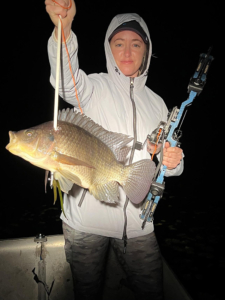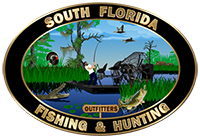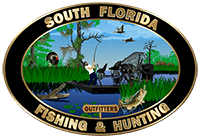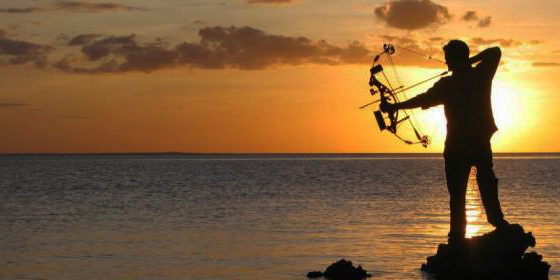Welcome to the ultimate guide to bowfishing, where we’ll provide you with expert bowfishing tips and take you on an immersive journey into this exhilarating sport. Bowfishing combines the precision of archery with the thrill of angling, offering a dynamic and rewarding experience for outdoor enthusiasts. Whether you’re a seasoned bow fisher or just starting out, our bowfishing tips and guide will equip you with everything you need to know to master the art of bowfishing.
From selecting the right equipment and honing your shooting skills to understanding the behavior of different fish species and navigating diverse water environments, we’ll provide expert insights, practical bowfishing tips, and step-by-step instructions to help you become a proficient bow fisher. Join us as we dive into the exciting world of bowfishing and unlock the secrets to success on the water.
What is Bowfishing?
Bowfishing is a unique form of fishing that combines elements of archery and angling. Instead of using traditional fishing equipment like rods, reels, and bait, bow fishers use specialized bows, arrows, and often a reel attached to the bowstring to shoot and retrieve fish directly from the water. The goal of a bowfishing trip is to target and catch fish by shooting them with a barbed arrow, typically in shallow or clear waters.
This thrilling sport offers outdoor enthusiasts an exciting and challenging way to hunt for fish in various aquatic environments, including freshwater lakes, rivers, streams, and coastal marshes. Bowfishing is not only an exhilarating activity but also serves as a means of controlling invasive species, conserving native fish populations, and promoting environmental stewardship.
Bowfishing Tips You Need to Know
Bowfishing is a thrilling blend of archery and fishing that offers an exciting way to catch fish. Here’s a step-by-step guide, followed by bowfishing tips, on how to bowfish:
Prepare Your Equipment
Gather your bowfishing gear, including a bow specifically designed for bowfishing, bowfishing arrows with barbed tips, and a reel attached to the bowstring. Make sure your equipment is in good working
condition before heading out.
Select Your Location
Choose a suitable bowfishing spot with shallow or clear waters that are known to have fish populations. Look for areas with vegetation, structure, or underwater features where fish are likely to congregate.
Spot Your Target
Scan the water surface for movement or signs of fish activity. Look for fish swimming near the surface or in shallow areas, especially in areas with good visibility. Keep an eye out for common bowfishing targets such as carp, gar, catfish, and tilapia.
Aim Properly
When aiming, consider the refraction of light in the water, which can make the fish appear higher or closer than they actually are. Aim slightly lower and in front of the fish to compensate for refraction, ensuring that your arrow will intercept the target accurately.
Draw and Release
Draw back the bowstring with the arrow nocked and aim at the target fish. Focus on your target and release the arrow smoothly, using proper form and technique to maintain accuracy and control.
Retrieve Your Arrow
After shooting, use the reel attached to your bowstring to retrieve your arrow and the fish. Reel in the line carefully to avoid tangling or damaging your equipment. If the fish is large or difficult to handle, use a landing net to bring it onboard.
Handle Your Catch
Once you’ve retrieved your fish, handle it carefully to avoid injury and minimize stress. Use a glove or rag to grasp the fish firmly and remove the arrow from its body. Be mindful of any spines, teeth, or shar
p edges that could cause injury.
Follow Regulations
Always adhere to local fishing regulations and obtain any necessary permits or licenses for bowfishing in your area. Familiarize yourself with size limits, bag limits, and any restricted or protected species to ensure compliance with the law.
Practice Conservation
Practice catch and release whenever possible, especially for non-game or protected species. Only keep what you intend to use, and dispose of any unwanted fish responsibly. Be mindful of the environment and avoid damaging vegetation or disturbing wildlife while bowfishing.
Stay Safe
Prioritize safety at all times while bowfishing. Be aware of your surroundings, avoid shooting near other people or boats, and wear appropriate protective gear such as sunglasses and gloves. Always handle your bow and arrows with care to prevent accidents or injuries.
By following these descriptive steps, you can effectively bowfish and enjoy this exciting outdoor activity while respecting the environment and adhering to fishing regulations.
Easy & Helpful Bowfishing Tips
To maximize success and enjoyment in bowfishing, it’s essential to employ effective techniques and strategies. Here are five bowfishing tips to utilize to your advantage:
- Use Polarized Sunglasses: Polarized sunglasses help reduce glare on the water’s surface, making it easier to spot fish and aim accurately. Invest in a quality pair to enhance your visibility and increase your chances of making successful shots.
 Practice Stealthy Approach: Approach your fishing spot quietly and avoid making unnecessary noise that could spook the fish. Move slowly and stealthily to avoid alerting your targets, increasing your chances of getting closer for a successful shot.
Practice Stealthy Approach: Approach your fishing spot quietly and avoid making unnecessary noise that could spook the fish. Move slowly and stealthily to avoid alerting your targets, increasing your chances of getting closer for a successful shot.- Aim for Soft Areas: When aiming at fish, target the softer areas of their bodies, such as behind the gills or in the side. Avoid aiming for hard or bony areas, as arrows may bounce off without penetrating, leading to missed opportunities.
- Consider Water Depth: Adjust your shooting technique based on the depth of the water. Aim lower for shallow water shots and higher for deeper water shots to compensate for refraction and ensure your arrow reaches its target accurately.
- Work with a Partner: Bowfishing is often more successful when done with a partner or a group. Work together to spot fish, coordinate shots, and retrieve catches for a more enjoyable and productive experience on the water.
Can You Bowfish in Florida?
Yes, bowfishing is legal in Florida and is a popular recreational activity enjoyed by many anglers. Florida offers a variety of freshwater and saltwater environments, including lakes, rivers, ponds, and coastal areas, making it an ideal destination for bowfishing enthusiasts. However, it’s important to familiarize yourself with Florida’s fishing regulations, including any specific rules or restrictions related to bowfishing in different regions or for certain species.
Additionally, obtaining the appropriate fishing license or permit may be required depending on your age and residency status. Overall, Florida provides ample opportunities for bowfisher men to pursue their passion and enjoy the thrill of this unique sport amidst the state’s rich aquatic ecosystems.
Looking for a Bowfishing Charter?
Come and enjoy the excitement of bowfishing with us in the stunning waters of Florida! Our experienced fishing guides will take you on an amazing adventure, whether you’re a beginner or an experienced fisherman. Find the best spots full of big fish, learn important bowfishing tips and techniques to help you catch them, and explore the beautiful Florida waterways. We provide high-quality equipment and personalized instruction to make sure everyone has a great time. Don’t miss out – book your bowfishing trip today for an unforgettable experience full of fun and excitement!
Frequently Asked Questions
How to tie a bowfishing arrow
To tie a bowfishing arrow, first, slide the bowfishing slide onto the arrow shaft. Then, thread the bowfishing line through the slide’s hole and wrap it tightly around the shaft. Secure the line with several knots and trim any excess. Finally, attach the bowfishing point and test the setup to ensure it’s secure before use.
Where to aim when bowfishing
When bowfishing, it’s crucial to aim for soft areas of the fish to ensure effective penetration and a clean shot. Targeting behind the gills or in the side of the fish increases the likelihood of a successful catch. Additionally, consider the size and species of the fish when determining where to aim, and compensate for refraction by aiming slightly below the target. Practice proper shooting technique to maximize accuracy and increase your chances of a successful bowfishing experience.




